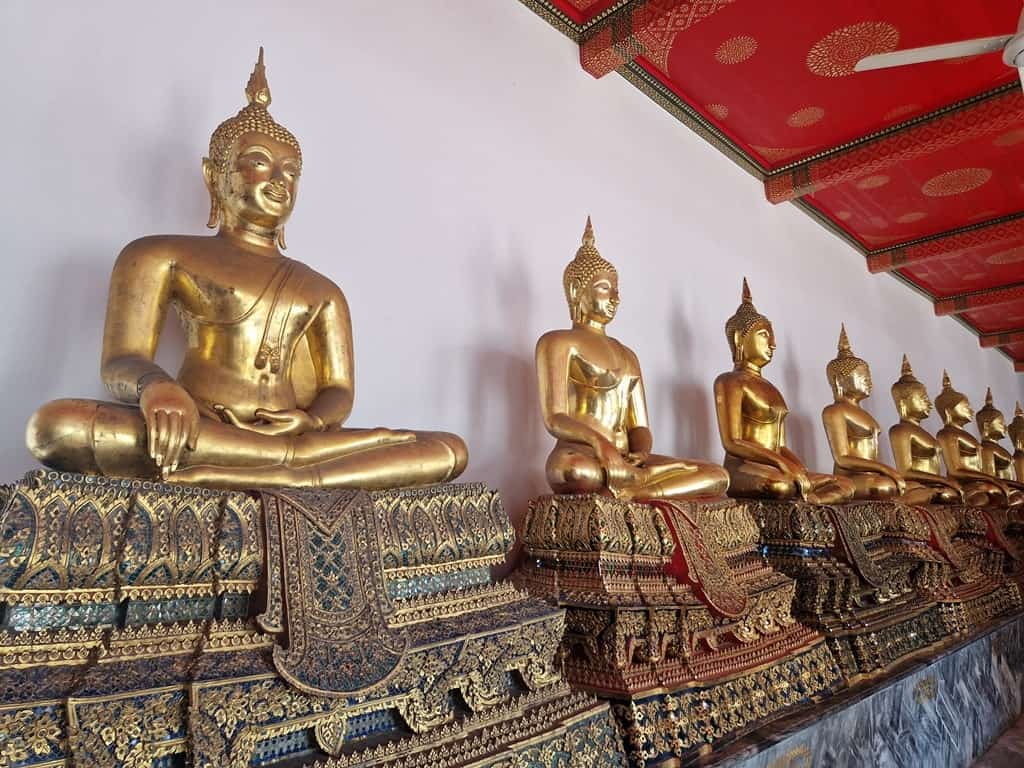The Thai capital of Bangkok has a lot to boast about. This energetic, modern city is the beating heart of the Southeast Asian nation, a metropolis that contrasts sparkling, skyscraper-clad horizons with gleaming Buddhist temples, a thriving Chinatown, and bustling markets.
From its food to its canals, there’s so much that makes Bangkok an exciting destination, serving up so much culture, history, and vibrant city life that even the most world-weary traveler will be invigorated by a visit here.
Table of Contents
What Is Bangkok Known For?
Boats
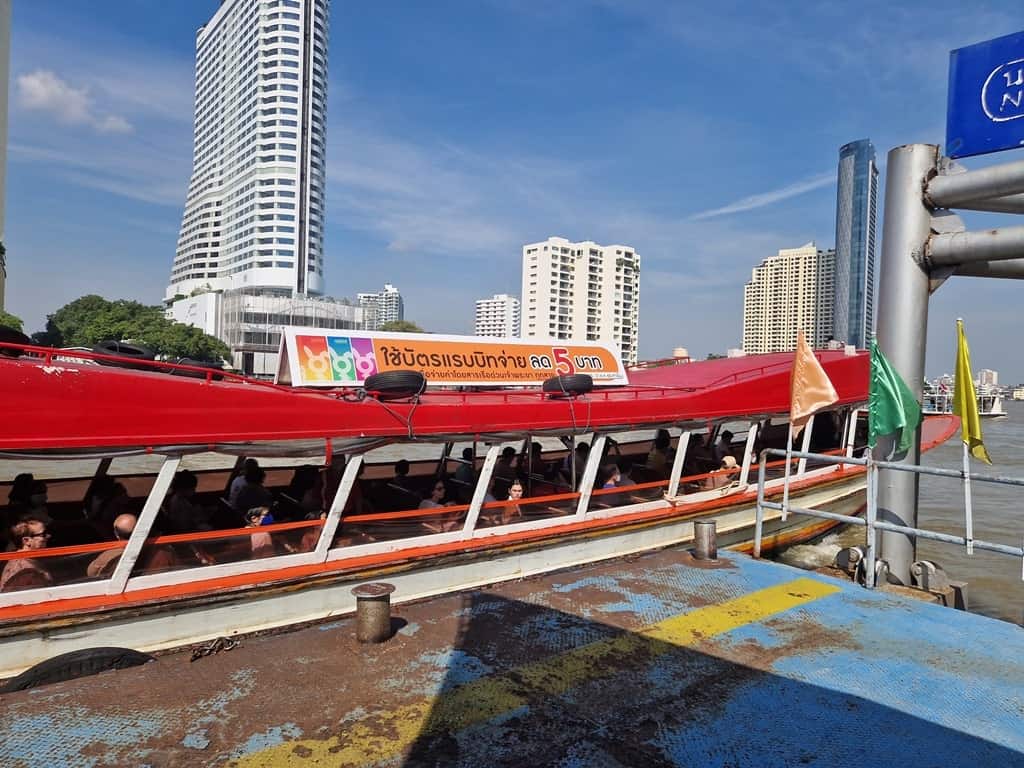
Bangkok doesn’t just have one main river, the Chao Phraya, flowing through it: it has many waterways and canals that lace their way through the city. Water transport is, therefore, an important part of the city.
While taking a boat in Bangkok in the past was crucial to trade and transport, today it still plays a role in getting people from A to B. Waterbuses for commuters regularly connect up parts of the Thai capital. In fact, the Chao Phraya Express Boat is believed to carry around 30,000 passengers per day. The San Siep Canal boat, on the other hand, carries almost 60,000 along its 27 stops.
There are also longtail boats and ferries that take people from one side of the Chao Phraya to the other. In short: boats are an iconic way to get around Bangkok, even if you catch one during your trip.
Chinatown
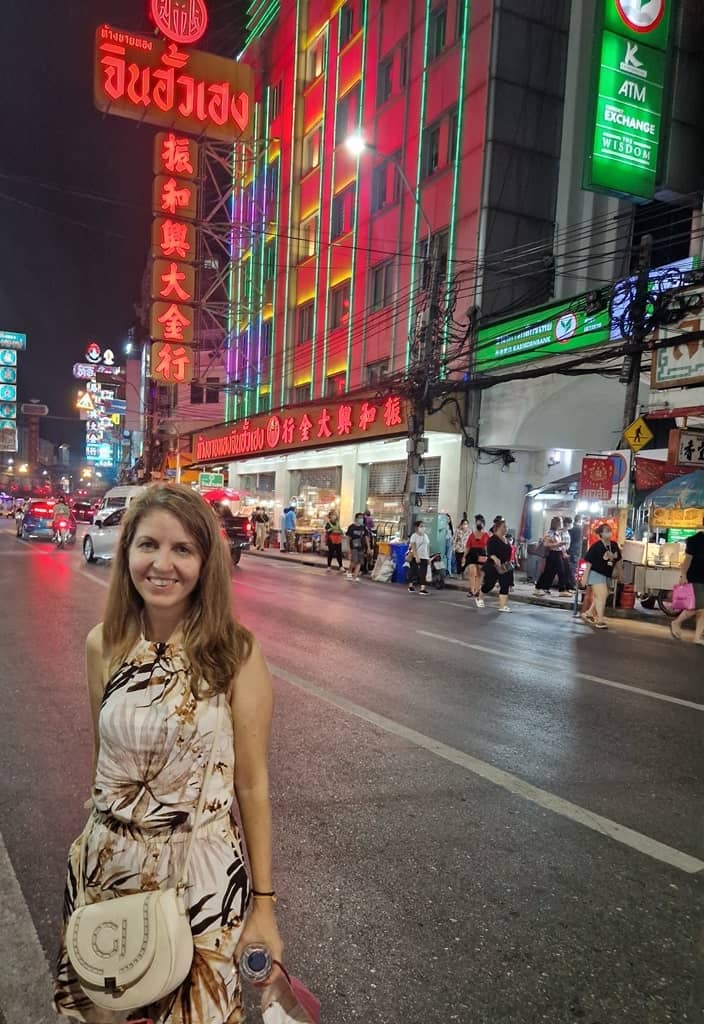
The Chinese population that calls Bangkok home is centered around the city’s large Chinatown — one of the largest in the world. It was founded in 1782 in a non-urban area just outside the city walls, but today it’s a central district of Bangkok.
Intriguing things lay around every corner in the city’s Chinatown. You’ll find Confucian and Taoist temples, including Wat Mangkon Kamalawat or the Guan Yin shrine, as well as shops and markets galore.
The area is best explored on foot, allowing you to fully wander the backstreets and soak up the sights, sounds, and smells of this exciting part of the city.
The Grand Palace
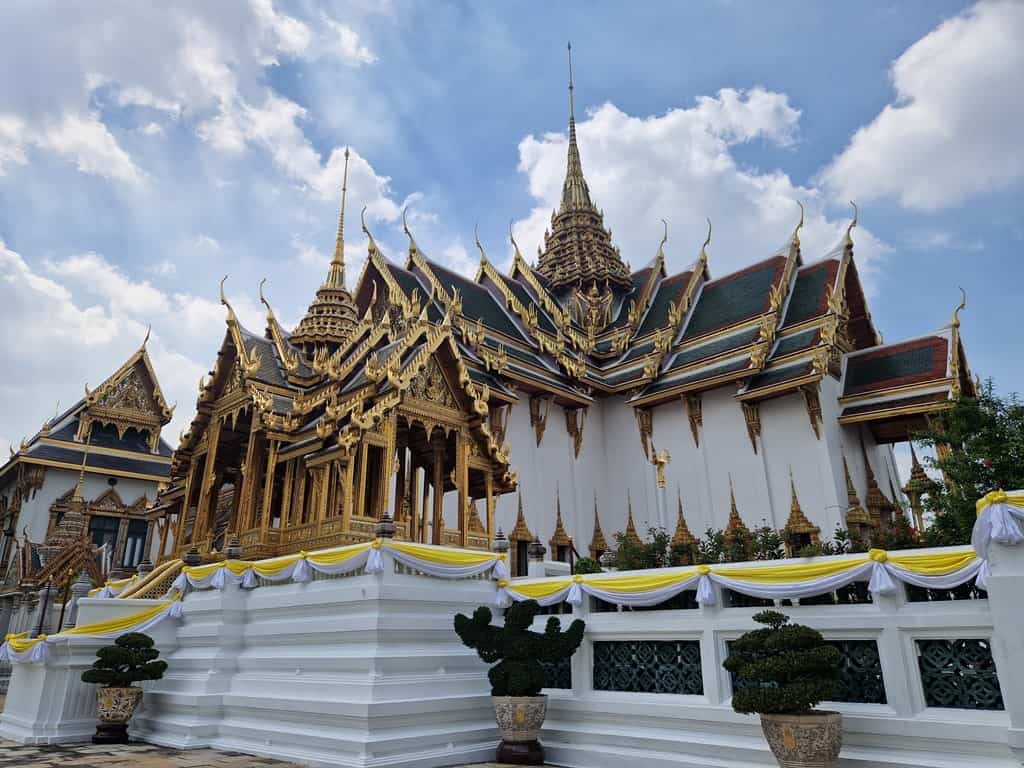
The Grand Palace in Bangkok has been the residence of Thailand’s royal family since 1782. This sizeable royal complex is not only a working residence for the monarchy but also a top tourist attraction in itself, housing many temples and treasures within a walled complex that covers an area of almost 220,000 square meters.
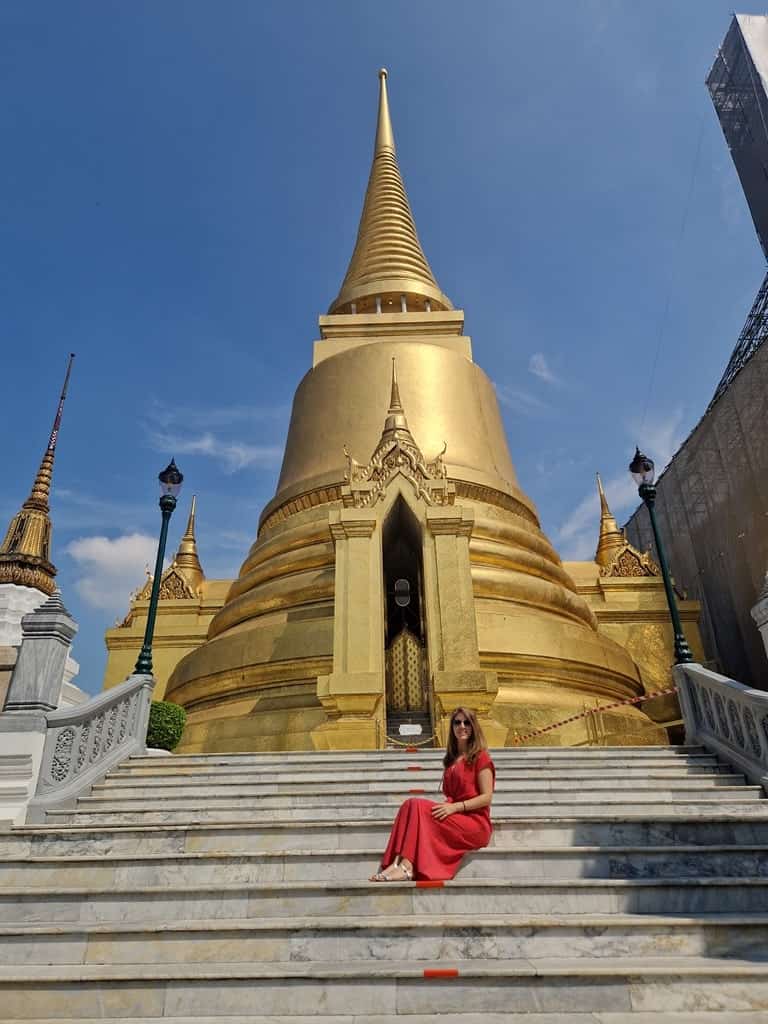
Among its halls and pavilions, gardens, and courtyards, you’ll find sights like Wat Phra Kaew. Also known as the Temple of the Emerald Buddha, this is the holiest Buddhist temple in the whole country. Housed within is a statue of the Emerald Buddha, an important religious object depicting Gautama Buddha carved out of jade (not emerald).
Chatuchak Weekend Market
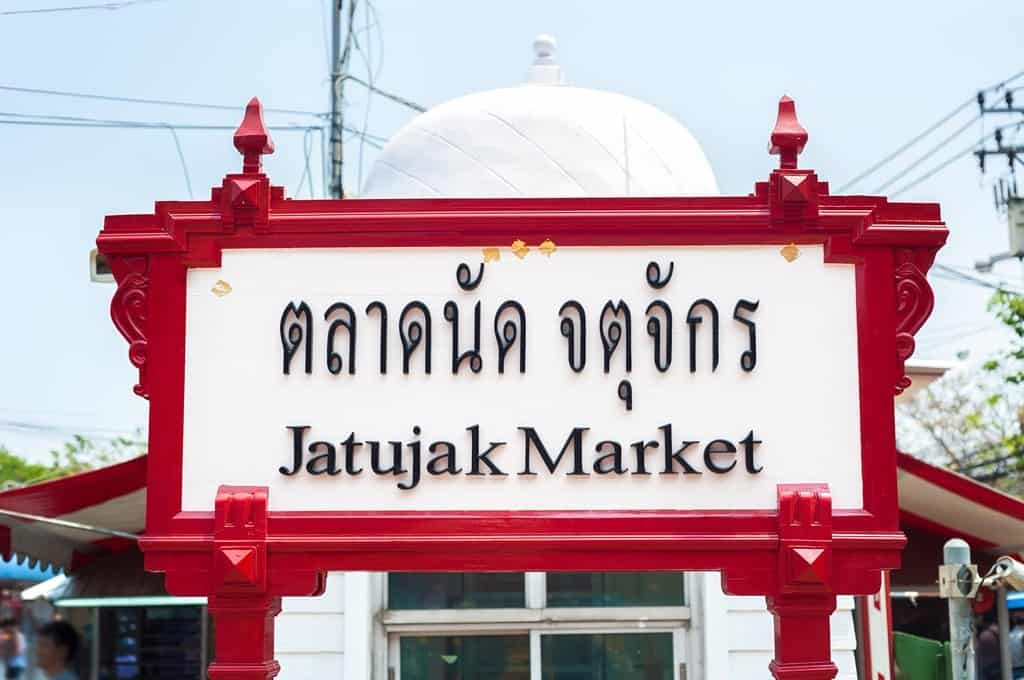
The sprawling Chatuchak Weekend Market boasts around 15,000 stalls and has been taking place almost every weekend since 1942. It claims to be the world’s largest and most diverse weekend market. And it certainly feels that way.
Every weekend 200,000 shoppers are thought to make their way to Chatuchak Weekend Market to browse and eat. There’s a whole world of goods on sale here across 27 different sections, including furniture, plants, antiques, vintage clothing, books, and electronics.
The weekend market is not just a large center of commerce but also a success story for urban regeneration. The extra space on which Chatuchak Weekend Market is located was formerly a huge rubbish dump, transformed in the 1970s.
Street Food
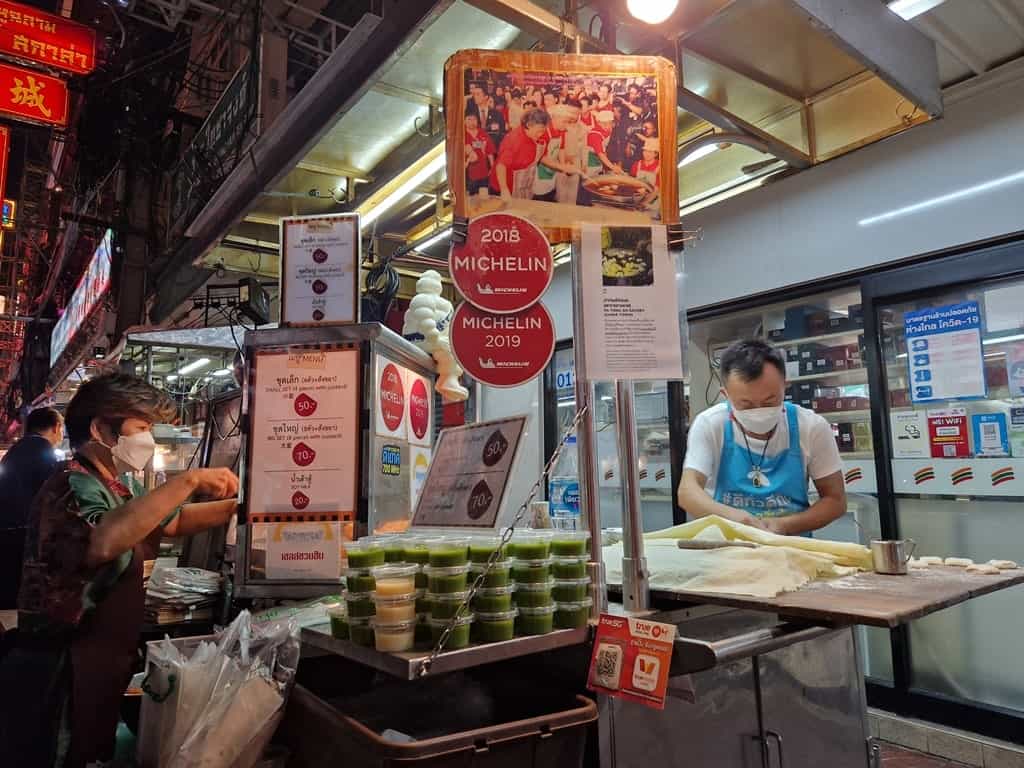
No matter where you walk down the street in Thailand, you’re never too far away from a street food vendor selling all manner of tasty snacks. Though there may not be as many as there once were, purveyors of street food are still part of the DNA of the vibrant Thai capital.
You can find surprisingly high-quality snacks and meals that can be eaten either on streetside tables and chairs or taken away to munch at your leisure. These vendors uphold traditional but quick Thai cuisine — anything from noodle soups and stir-fries to deep-fried parcels and sweet snacks. Come evening; these mobile street stalls become veritable restaurants and drinking spots for locals, where you can enjoy alcohol paired with snacks like sausages and squid.
Khao San Road
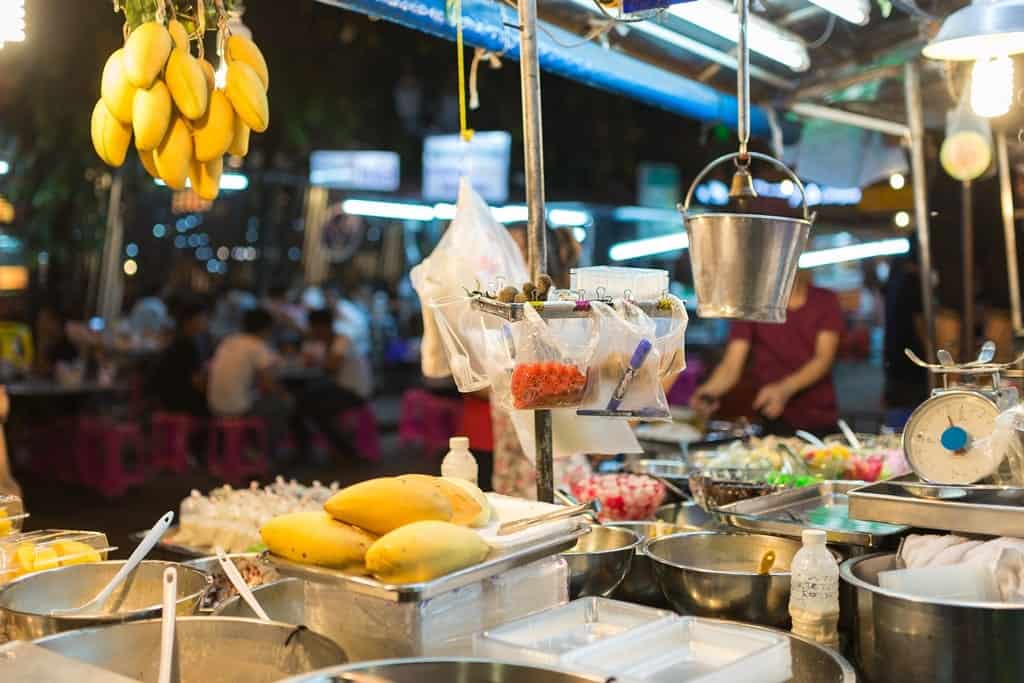
The somewhat notorious Khao San Road is a historical center for backpacking not just in Thailand but across all of Southeast Asia. Translating to “milled rice” due to the rice market located here back in the day, Khao San Road has since transformed into a mecca for young, independent travelers who want to have a good time.
Here along this 410-meter stretch of street, travelers can find cheap accommodation options, Thai massage parlors, late-night bars, restaurants, and clubs. In the daytime, there are also tour operators and travel desks for all manner of destinations. It’s also a base for jumping off to nearby destinations like Cambodia and Laos.
It may not be as wild as it once was, with regulations and facelifts bringing into the 21st century, but it’s still a frenetic part of town — particularly in the evening, with its colorful lights, bustling bars, and roving vendors.
Lumpini Park
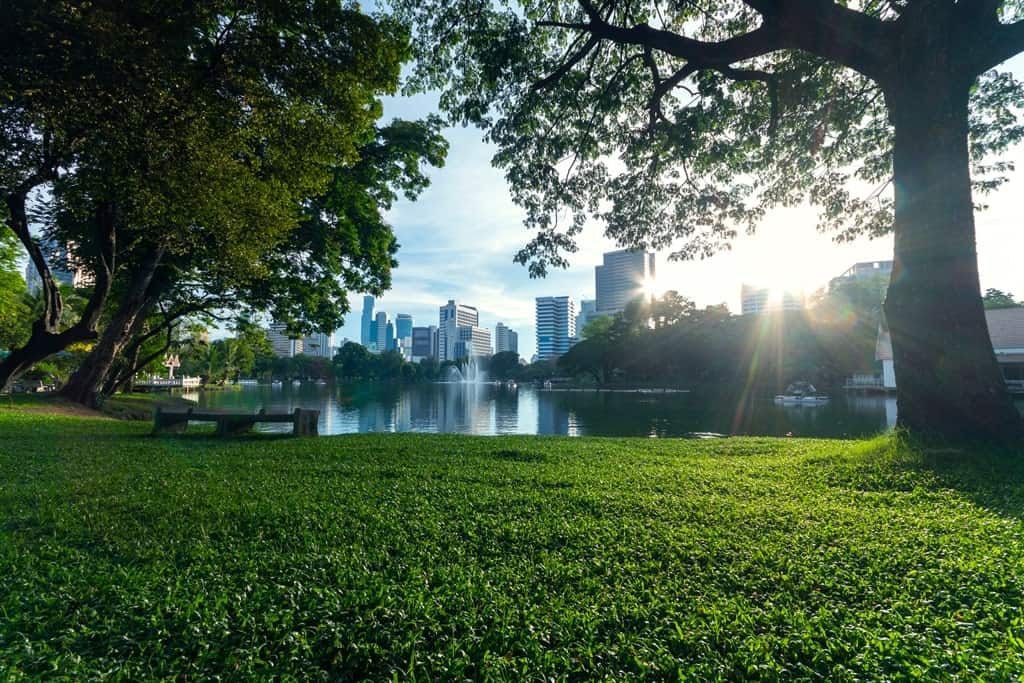
This large, green public space in the city was the first of its kind in Bangkok. Transformed into a public park in 1925 from land that originally belonged to the royal family, it was given the name Lumpini after the place in Nepal where Gautama Buddha was born.
Today it features all manner of amenities for locals, including a large boating pond, a library, swimming pool, and is a popular place for people to relax and exercise.
Tuk-tuks
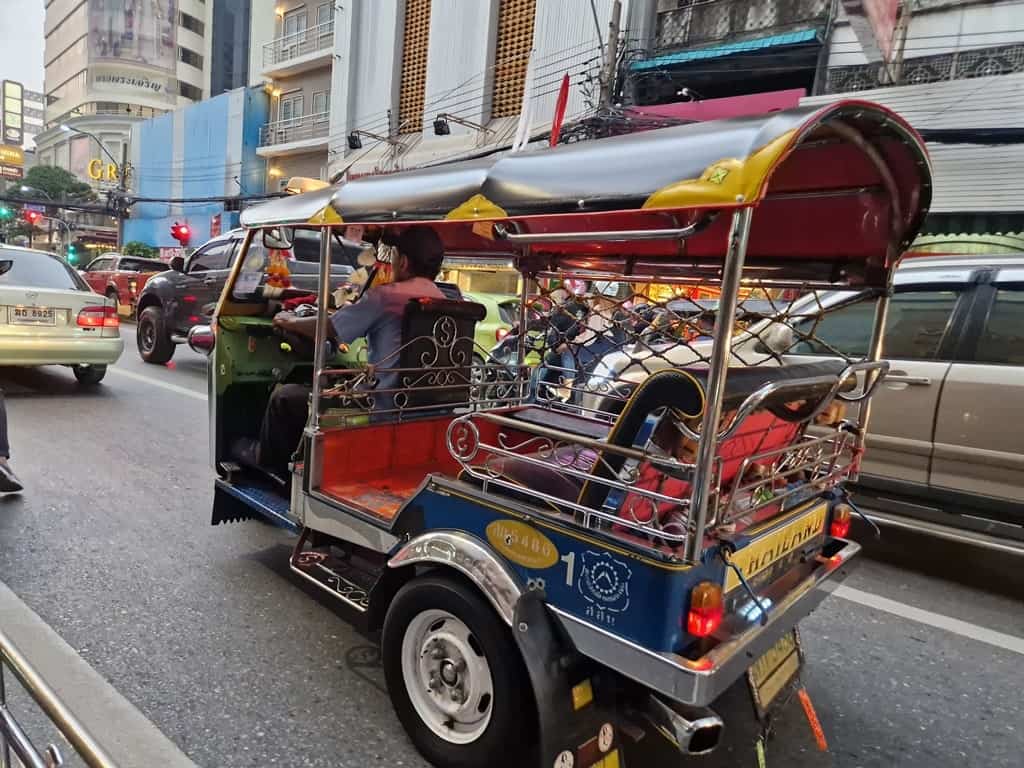
Tuk-tuks are a ubiquitous part of Bangkok’s transport system. Also known as auto-rickshaws, these converted motorbikes zip through the streets in their thousands, getting passengers where they need to be as quickly as possible.
Fun fact: the name is onomatopoeic, deriving from the sound of the often two-stroke engine of the bikes that power the vehicle. They’re a quick and easy way to get around the city (and cheap, too), and these days have a lot more regulation than they used to. There are even electric-powered tuk-tuks that ferry people around the city, too.
Phraeng Phuton district
Located just a short walk from the Grand Palace, this picturesque part of the city offers a glimpse into what Bangkok was like in the past. Here you’ll find a recently renovated collection of buildings in the form of Sino-European heritage shophouses, painted turquoise and cream, lining cobbled streets.
The history here has been carefully maintained and feels worlds away from the Skytrain and skyscrapers of modern-day Bangkok. Locals and visitors alike rub shoulders in Phraeng Phuton’s historic eateries, some of which have been going strong for over 80 years. Plaques and signage outside some buildings offer a glimpse into the past events and people who called this district home.
Songkran
Thailand’s traditional New Year festivities are celebrated in a unique way. Celebrated on the 13th of April every year, the national holiday itself covers five or so days of merry-making (and merit-making) — especially in the capital. Tradition holds that people travel home to see their families and visit local temples to leave offerings and for purification.
Songkran, however, is more famous internationally as a water festival. Major thoroughfares in the capital are closed off and become the scene of a city-wide water fight. People of all ages and backgrounds get together to throw water on each other.
The Songkran Festival also takes place, featuring parades, with Khao San Road and Silom Road being major centers of the festivities. Water pistols and buckets of water are the order of the day.
Jumping off point for travel
Bangkok is one of the busiest air transit hubs in Asia. It’s here that every year millions of passengers jump aboard planes or make transfers on trips to and from Bangkok and beyond. But it’s not just airports that make Bangkok so busy.
From the Thai capital, travelers regularly leave on buses bound for northern cities and far-flung islands or even head over international borders to other Southeast Asian destinations. And then there are the railway connections in Bangkok, taking passengers all across the country from various major hubs in the country.
Wat Pho
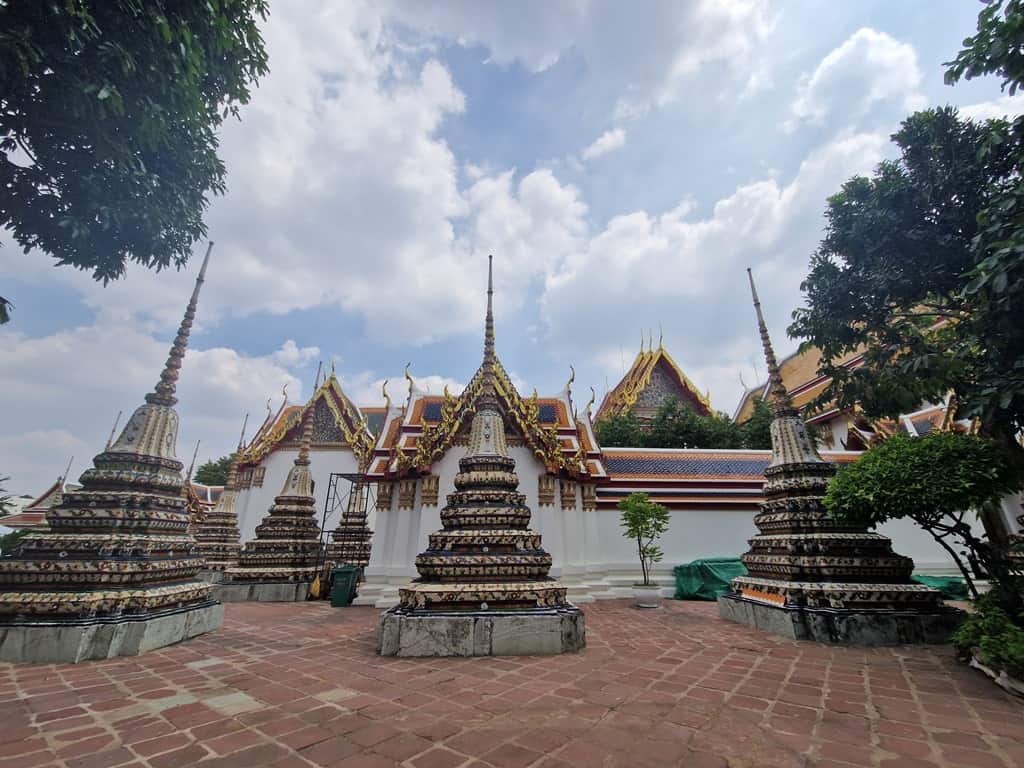
One of the most famous and most visited Buddhist temples in Bangkok, Wat Pho, was first built in the 16th century. Restored in 1788 by King Rama I, who had recently constructed the Grand Palace, this large temple complex covers eight hectares and is a center not just for Buddhism but also for Thai medicine and Thai massage.
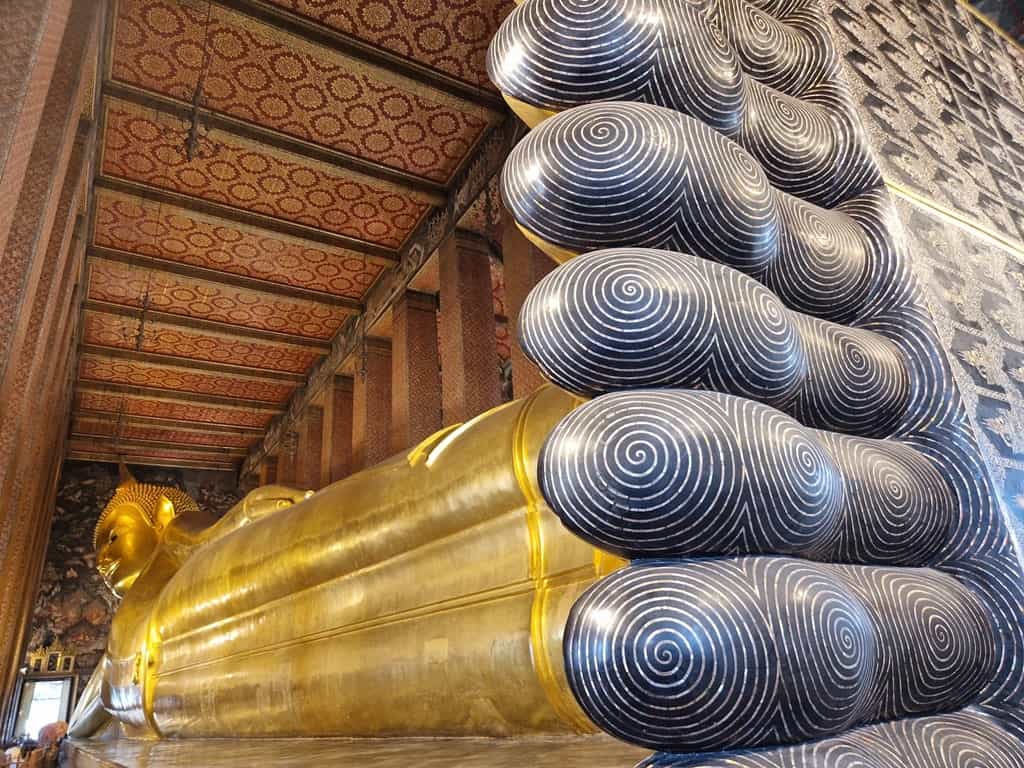
Wat Pho is possibly most famous for its Reclining Buddha. Located in the main sanctuary of the temple, it measures 46 meters long by 15 meters high, making it the largest statue of its kind in the capital. It was completed in 1848 and is impressively completely covered in gold leaf with mother-of-pearl inlay.
Visitors to the temple regularly leave offerings in the form of coins in one of the 108 bowls close to the Buddha. It’s possible to change larger denominations for 108 coins — one for each bowl, resulting in extra good luck.
Floating market
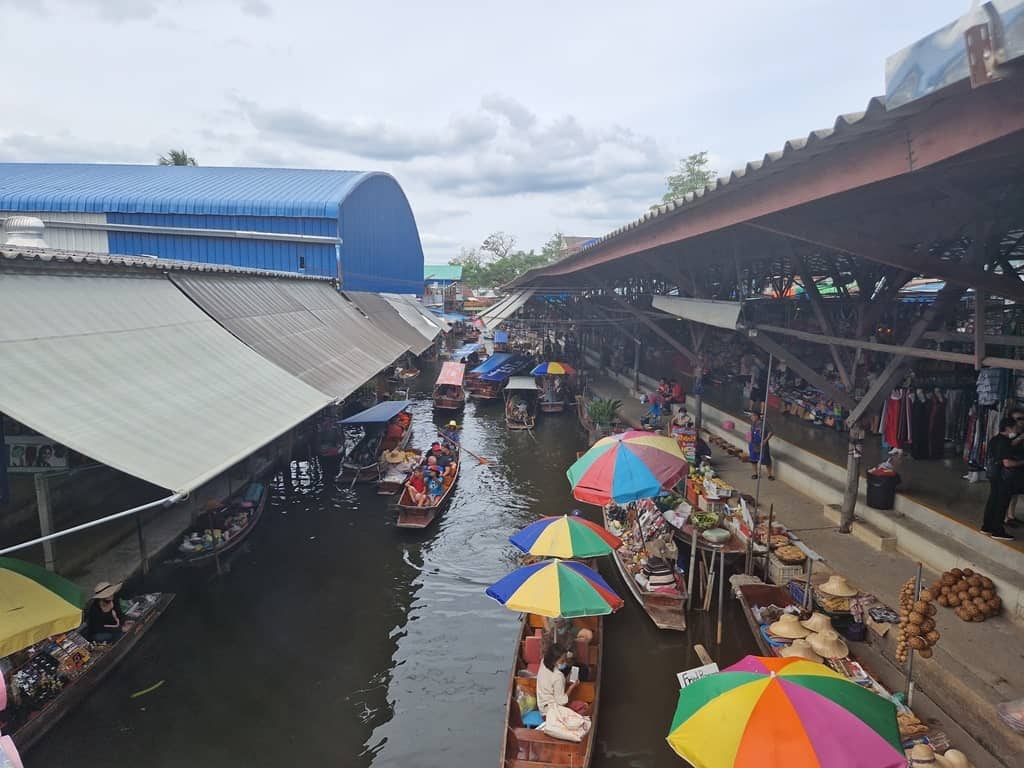
Floating markets were once an important part of the trade in Bangkok, serving communities that grew up along the city’s many waterways. Today there are only a handful of floating markets that remain in operation, allowing visitors and locals alike to experience this unique way of shopping.
One of the most well-known is Damnoen Saduak Floating Market. In business for 100 years, this market has a whole array of products on sale among a network of narrow canals. Today it’s particularly touristed but is nonetheless intriguing. There’s also Taling Chan Floating Market, located just outside the city. Here you’ll find fresh produce sold by local farmers, as well as places to eat along the river itself.
Maeklong Market
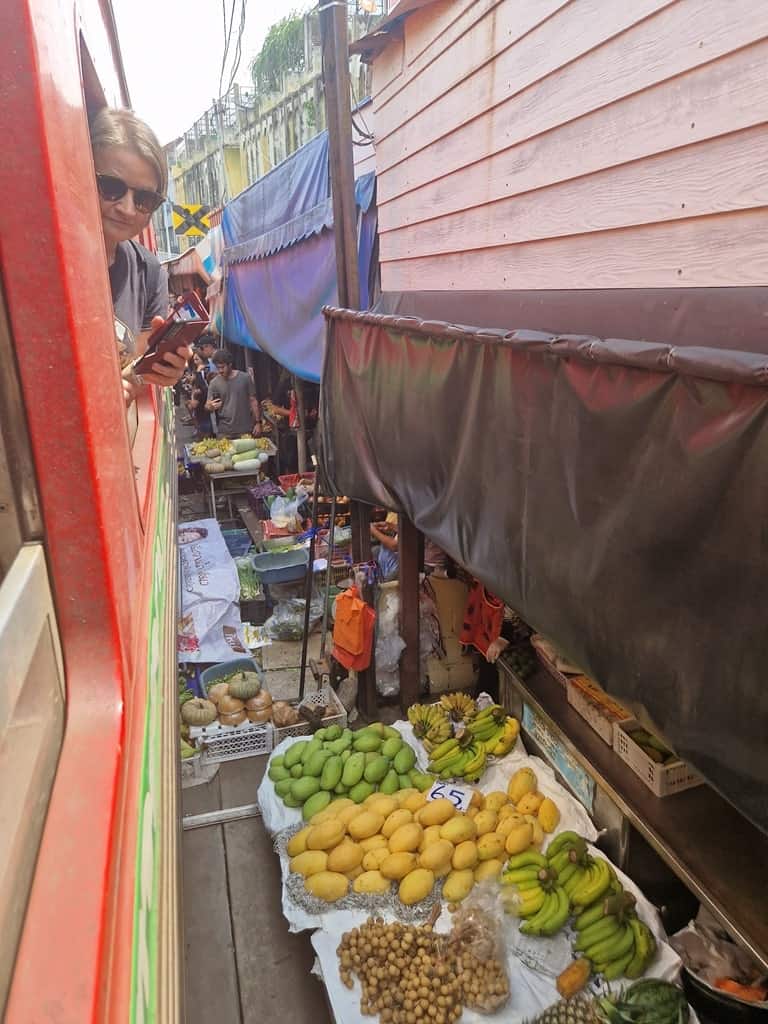
It’s not just the floating markets that are famous in Bangkok — there’s also the unique railway market. Though situated around 80 kilometers outside the capital, Maeklong Market is easy to reach on a tour, or by train, of course. Nicknamed in Thai Talat Rom Hup (literally “Umbrella Pull Down Market”), it’s here along a railway track that one of the largest seafood markets in Thailand does its business.
The strange thing about this market is that the railway tracks go straight through it, with visitors treading the tracks as they browse and explore the market. As the trains pass by, there’s a frenzy of activity as vendors swiftly put down their awnings and move their goods until the tracks are clear again. It’s certainly an experience to see this unique, authentic market in operation.
Skyscrapers
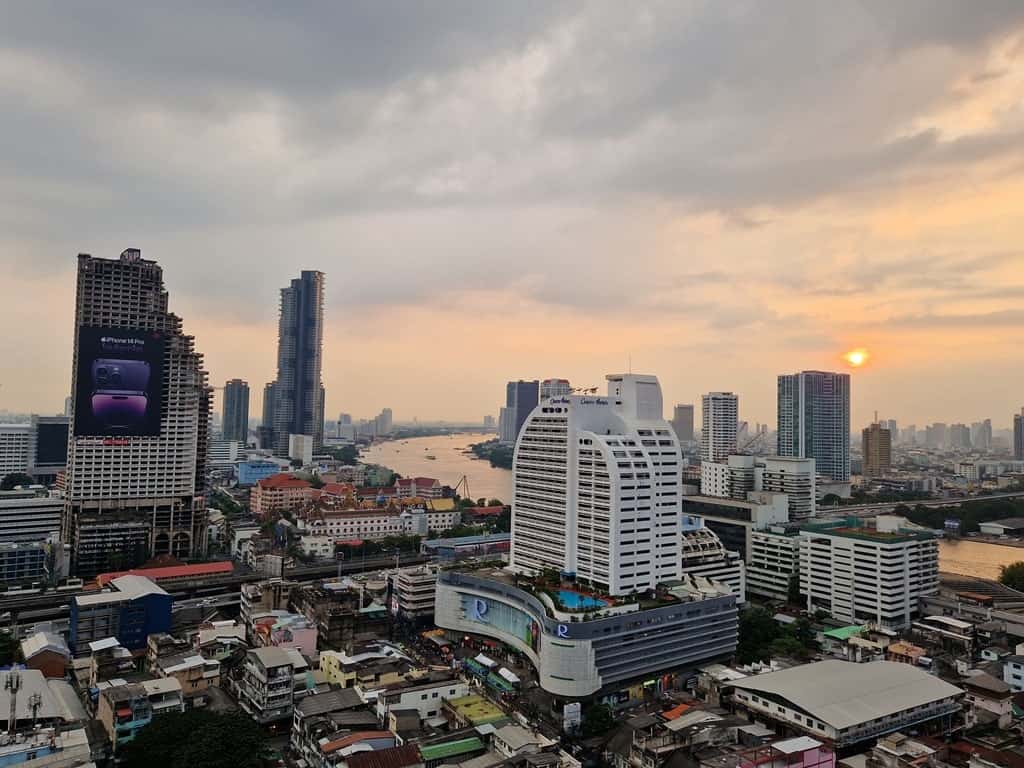
Development in Bangkok has created a modern Asian capital city. Part of this development involves skyscrapers, with 165 to its name and many more currently under construction. The city is actually ranked 14th in the world for its number of skyscrapers, a building boom that began back in the late 1980s during a period of economic growth.
Today the skyline is adorned with all manner of skyscrapers. The highest is Iconsiam, a mixed-use building with malls, hotels, and residences, which stands at 318 metres. But perhaps the most striking is the King Power Building (314 meters), which appears to have cubes missing from it in a dramatically twisting structure.

